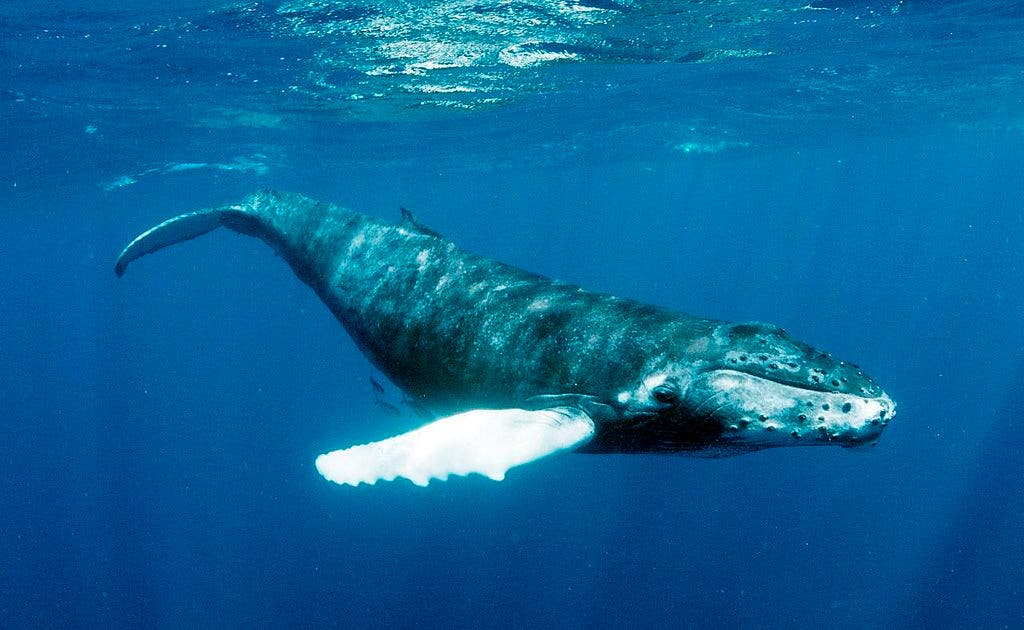Over the years, researchers have used a wide range of techniques to study the whereabouts of whales in the ocean, including aerial surveys, sightings and hydrophones. Now, for the first time ever, they were able to passively listen to whales (essentially, eavesdropping) using existing undersea fiber optic cables.

A fiber optic cable essentially carries light. Fiber optic cables are what give you high-speed internet (if you’re fortunate enough to have high-speed internet, that is), and researchers have recently learned that you can also transform these cables into seismic sensors. When the cable is subjected to acoustic waves (like those in an earthquake), the transmission of the light is affected, and this can be detected with specialized equipment. But sound is also an acoustic wave, so a group of researchers thought why not try and also use this to detect sounds underwater — like for instance, the sounds made by whales.
The technique, called Distributed Acoustic Sensing (DAS), uses an instrument called an interrogator to tap into a fiber optic system, turning unused fibers in the cable into hydrophones. The research was carried out in the Svalbard archipelago in the Arctic Ocean, where baleen whales, blue whales and others are known to forage during the summer.
“Sound travels five times faster in the ocean than in the air,” Léa Bouffaut, a researcher at the Center for Bioacoustics at Cornell University and first author of the study, said in a statement. “Because whales are highly vocal, acoustic monitoring is a very effective way for us to assess where they are located and where they are going.”
The possibilities of fiber optics
While they have largely recovered from whaling, many whale species are still threatened or critically endangered. They are subject to a growing number of stressors driven by human activities, from ship strikes to noise pollution. Additionally, alteration of water and nutrient cycles from chemical and plastic pollution is a growing problem.
Researchers have largely relied on passive acoustic monitoring as a reliable way to study whales, from near-real-time multi-sensory platforms to fixed autonomous archival recorders. However, it’s still very expensive to deploy hydrophones, and most recorders are sparse and unevenly spread. Meaning the ocean is under-sampled and our information about these whales is very sparse.
Here’s where DAS enters. The technology, essentially a hydrophone array, can cover a much bigger area for monitoring compared to other methods. Researchers can use it not only to detect whale vocalizations but also to locate where the whales are in both space and time, providing an unprecedented spatial resolution, Bouffaut argued.
“Deploying hydrophones is extremely expensive. But fiber optic cables are all around the world, and are accessible,” she said. “This could be much like how satellite imagery coverage of the Earth has allowed scientists from many different fields to do many different types of studies of the Earth. To me, this system could become like satellites in the ocean.”
Whales in the Arctic
The researchers worked with Norway’s Research Agency (Sikt), which gave access to over 250 kilometers of fiber optic cable in Svalbard, between the archipelago’s main town and a research settlement. The entire cable goes from a sheltered fjord (Isfjorden) and out into the open ocean, where 120km was used as a hydrophonic array.

For the study, two members of the research team traveled to the archipelago in June 2020 at the start of the Covid-19 pandemic. They partnered with the company Alcatel Submarine Networks Norway, which provided the interrogators — the instruments that allowed the researchers to tap into the Sikt fiber optic cable.
After reviewing over 250 terabytes of data, the researchers identified stereotyped calls for North Atlantic blue whales outside of Isfjorden. There are calls associated with male vocalizations. They also noted D-calls, vocalizations in which the sound sweeps down and can be made by males and females. They detected these inside the sheltered waters of the fjord.
More work is required to see just how this technology can be used for the study and conservation of whales, but it’s an innovative method with a lot of potential, the researchers conclude.
“My hope is to further develop this technology and make it available for all those involved in marine conservation,” Bouffaut said. “This technology could make the future much brighter for whales.”
The study was published in the journal Frontiers in Marine Science.


